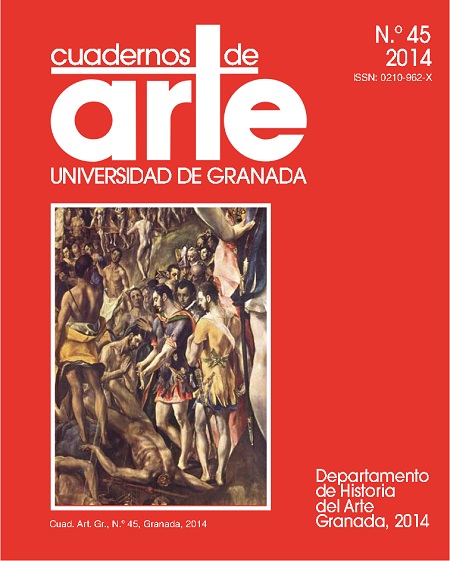Aportaciones al debate sobre el significado iconográfico de las pinturas finales de Tiziano (1560-1575): la prudencia como primera virtud del buen pintor
Palabras clave:
Pintura renacentista, Pintura veneciana, Alegoría, Iconografía, Prudencia, Buen Gobierno, Tiziano, Felipe II, Alegoría de la PrudenciaResumen
Siguiendo el modelo iconográfico y estudio que Panofsky desarrolló en su obra Tiziano, problemas de iconografíatratando de dar respuesta a los principales problemas que plantea el significado de los cuadros del gran pintor veneciano,se intenta con este artículo pensar y abrir un debate académico sobre la significación del concepto virtud en el artistaatendiendo a la división que establece Tatarkiewicz. En este sentido, el hilo conductor de este trabajo quiere hacerhincapié en la reflexión sobre si la significación de la pintura Alegoría de la Prudencia de Tiziano radica en el perceptoro más bien en el creador.Descargas
Los datos de descargas todavía no están disponibles.
Descargas
Publicado
2014-12-01
Cómo citar
Martínez Peláez, A. (2014). Aportaciones al debate sobre el significado iconográfico de las pinturas finales de Tiziano (1560-1575): la prudencia como primera virtud del buen pintor. Cuadernos De Arte De La Universidad De Granada, 45, 59–77. Recuperado a partir de https://revistaseug.ugr.es/index.php/caug/article/view/4853
Número
Sección
Artículos
Licencia
Los autores que publican en esta revista están de acuerdo con los siguientes términos:- Los autores conservan los derechos de autor y garantizan a la revista el derecho de ser la primera publicación del trabajo al igual que ser licenciado bajo una licencia Creative Commons que permite a otros compartir el trabajo con un reconocimiento de la autoría del trabajo y la cita de la fuente original, con un uso no comercial y siempre que no se hagan obras derivadas.
- Los autores pueden establecer por separado acuerdos adicionales para la distribución no exclusiva de la versión de la obra publicada en la revista (por ejemplo, situarlo en un repositorio institucional o publicarlo en un libro), con un reconocimiento de su publicación inicial en esta revista.
- Se permite y se anima a los autores a difundir sus trabajos electrónicamente (por ejemplo, en repositorios institucionales o en su propio sitio web) antes y durante el proceso de envío, ya que puede dar lugar a intercambios productivos, así como a una citación más temprana y mayor de los trabajos publicados (Véase The Effect of Open Access) (en inglés).


 ISSN-e: 2445-4567
ISSN-e: 2445-4567








